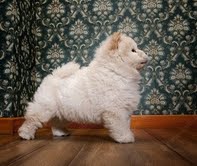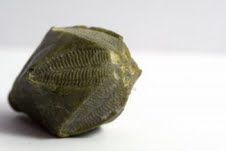In A Novel in a Year, Louise Doughty says, “Naive enthusiasm is a huge asset in the early stages when the most important thing is to write.” She encourages us to write…which is after all what writers do – right?
And so I write…here is the uncensored results:
This is a VERY fictionalised piece with a spattering of autobiography:
I remember a certain photograph…my siblings and I are in it. We’re holding up medals and in front of us is our Beagle, Rufus, with ribbons draped over him. I don’t remember anything about that day, but I know that we used to show Rufus at dog shows. Mum used to show Rufus; Dad showed Alma, also a Beagle; my sister showed Ralph, a white Chow Chow she hated grooming; my brother showed Brutus his Chihuahua, and I showed my Labrador, Gus. Rufus became an Australian Champion, though he was certainly not a natural. I think he won this title more out of mum’s determination than the qualities of his breed. I remember Alma was a dog that everyone loved, Ralph was a prince, Brutus was the butt of all doggy jokes, but Gus was frightened and timid, he never cocked his leg to urinate and he used to wet himself whenever anyone went near him other than me.
 They say that dogs and their owners resemble each other. Rufus was sleek and smart but quite and even tempered, like mum; Alma was lovable, and though he appeared stupid, he wasn’t, he was just a little clumsy, like dad. We would never hand over any creation we’d made at school for dad to inspect out of fear of him breaking it. This fear came from previous experience. My sister was definitely a bit of a princess, so her and Ralph were two peas in a pod, though his coat didn’t get quite the same attention as her hair did. My brother and Brutus, though miles apart in size, were always both competing for attention, my brother pestered while Brutus yapped. I was dichotomous and to some extent I still am. As a child I was a show-off and yet timid, I loved to be the centre of attention and to lead the action, but was a fearful of shadows and darkness. So in some way, like my dog, I was timid and shy, even fearful.
They say that dogs and their owners resemble each other. Rufus was sleek and smart but quite and even tempered, like mum; Alma was lovable, and though he appeared stupid, he wasn’t, he was just a little clumsy, like dad. We would never hand over any creation we’d made at school for dad to inspect out of fear of him breaking it. This fear came from previous experience. My sister was definitely a bit of a princess, so her and Ralph were two peas in a pod, though his coat didn’t get quite the same attention as her hair did. My brother and Brutus, though miles apart in size, were always both competing for attention, my brother pestered while Brutus yapped. I was dichotomous and to some extent I still am. As a child I was a show-off and yet timid, I loved to be the centre of attention and to lead the action, but was a fearful of shadows and darkness. So in some way, like my dog, I was timid and shy, even fearful.
Here’s a piece of writing about a fossil I have, where I try to imagine a character with the same features as the fossil:
Personification of the fossil:
- porcelain skin

- tattooed
- delicate
- old soul
- flows and changes
- change comes slowly
- transformational
- becomes firm and erodes simultaneously
She has blonde hair, golden blonde, the colour of sand. Her skin is porcelain pale and so translucent you can trace stars in the veins below.
She wears dusky coloured linen pants and a filigree top patterned with circles in brown, looking like an odd mix of snake skin and butterfly wings. Her voice is soothing like the ocean’s lapping tide. She sails along barely toughing the earth, skimming the surface, blending into the natural environment. She is old. She used to be a professor of sociology, now she wanders in her garden, reads in her sunroom, contemplates the sky, paints in vivid colours.
Fossil character bio: Ursula’s garden would be the envy of the most active botanist. She has a green thumb. “My great grandfather was a horticulturalist,” she tells me, “as was his father before him. It’s in my genes.” In this cacophony of flowers and greenery, she is almost invisible. Her presence here is so natural, she blends in. One would think her skin would be deeply tanned from so many hours outdoors, but wrapped in a filigree shawl and topped with a large floppy straw hat, she is translucent. Her veins form stars just below the surface. She is celestial. “Sometimes I sit out here at night, wrapped in nothing but a warm blanket. The heavens seems so close, the whole garden looks up and sings.” She has a rich fantasy life and this fuels her art. The rich colours of her garden inspire her. As a sociologist, she travelled extensively. She spent her life studying story as a means of cultural communication and now those stories inform her artistic sensibility.
My approach to the fossil writing: definitely not factual. I wanted to capture the essence of her soul, her spirit. One who is wise and unassuming? Seeing things in her life culminate and make sense, all connected. This sense of connectedness of all things in her life – themes and threads throughout her life: the ocean, the stories, the painting, the garden: all part of the same theme.
Here I play around with a phrase – a random line from Emily Ballou’s On the Splice (This story is available in The Best Australian Stories 2009):
Manipulating the phrase:
These things she worried about. (this is Ballou’s line)
She worried about things.
About things that worried her.
Things worries her.
She worried things.
It’s funny how this last line changes the meaning, making the whole thing more intriguing.
Substituting words from the original phrase with other words:
She worried about things.
Things troubled her.
Objects pained her.
She caused them pain.
She cursed them.
I find I want to bring this to some sort of conclusion, to impose meaning, to tie it all up nicely.
Adding and subtracting words from the original phrase:
She worried about things.
She always worried about major things.
She worried things.
She worried troublesome things.
I’m not sure how this one is different from the previous two strategies of word play, but they were all a lot of fun.
Now it’s your turn. On the ‘Resources’ page of this website, you will find these writing activities in a PDF. Why not give them a go? Feel free to post your responses as a comment attached tot his post – I’d love to see how you get on.



